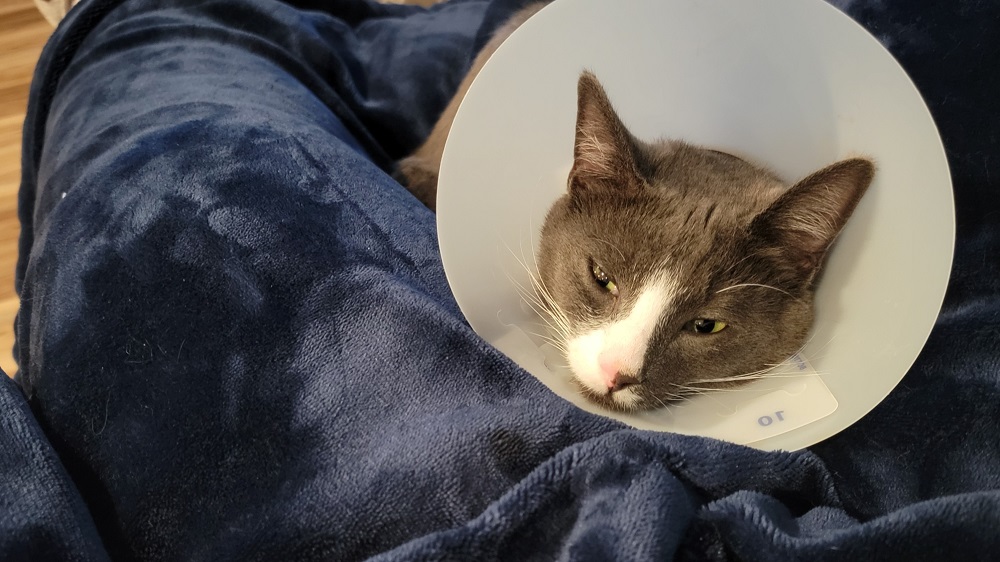Spaying and neutering are some of the most common veterinary procedures for cats, and for good reason. These surgeries prevent overpopulation, reduce the risk of certain diseases, and often lead to calmer, more content pets. But if you’ve ever wondered how these procedures affect your cat’s growth, development, and long-term behavior, you’re not alone. The impact of spaying and neutering on development has been widely studied, and we’re here to break it down in a way that’s clear, detailed, and maybe even a little entertaining.
What Exactly Happens During Spaying or Neutering?
Before we dive into the developmental effects, let’s clarify what the procedures entail.
- Spaying involves removing a female cat’s ovaries and uterus. This prevents pregnancy and halts the production of reproductive hormones like estrogen.
- Neutering involves removing a male cat’s testicles. This eliminates the ability to reproduce and significantly reduces testosterone levels.
Both are performed under general anesthesia and are considered safe when done by a licensed veterinarian. Recovery is usually quick, and the benefits kick in almost immediately.
How Hormones Influence Growth and Development
Reproductive hormones do more than control heat cycles or spraying behavior. Estrogen and testosterone also influence physical growth, bone development, metabolism, and even behavior patterns.
When a cat is spayed or neutered, those hormone levels drop sharply. This affects certain aspects of their development, especially if the procedure is done early in life.
Physical Growth After Spay or Neuter
One of the most noticeable differences in neutered or spayed cats is their size. And no, it’s not just about extra snacks and cozy naps.
Height and Length
Cats who are spayed or neutered before reaching full physical maturity often grow slightly taller and longer. This is because the growth plates in their bones stay open a bit longer without the influence of sex hormones. The result? A longer frame with a more slender, “leggy” appearance in some cases.
This effect is mild and doesn’t negatively impact health. In fact, delayed closure of growth plates is considered normal in neutered cats and does not lead to weakness or joint problems when properly supported with good nutrition and exercise.
Weight Gain and Metabolism
Here’s the part many cat owners notice: weight gain. After spaying or neutering, a cat’s metabolism often slows down, and their energy levels may dip slightly. Without proper diet and exercise adjustments, this can lead to obesity.
Tips to manage post-op weight gain:
- Switch to a lower-calorie diet formulated for spayed/neutered cats
- Use food puzzles to slow eating and add mental stimulation
- Increase interactive playtime to encourage regular activity
Weight gain is not inevitable. It just requires a little extra attention and portion control.
Behavioral Changes After Surgery
One of the main reasons people choose to spay or neuter their cats is behavior. And for the most part, the changes are welcome.
Reduced Roaming and Spraying
Male cats are much less likely to wander in search of a mate or spray your furniture to mark territory after neutering. The drop in testosterone helps reduce these hormonally driven behaviors.
Females no longer go into heat after spaying, which means no yowling, pacing, or attempts to bolt out the door in search of romance.
Decreased Aggression
Cats who were previously aggressive due to sexual competition often become more mellow. While neutering doesn’t fix all behavioral issues, it removes a major source of stress and hormonal tension, especially in multi-cat homes.
Increased Affection and Calmness
Many cat owners report that their spayed or neutered cats become more affectionate, relaxed, and easier to live with. This may be due to a combination of reduced hormonal drive and better comfort overall.
That said, your cat’s core personality doesn’t change. If they were feisty and independent before, they’ll still be that way, just without the added drama of mating season.
Timing of Spay/Neuter and Its Impact
The age at which your cat is spayed or neutered can influence how these changes play out.
Early Spay/Neuter (Before 5 Months)
- Slower metabolism and slight increase in final size
- Strong prevention of unwanted behaviors before they start
- Reduced risk of reproductive diseases, including mammary cancer and pyometra
Traditional Timing (5–6 Months)
- Most vets recommend this age range for a balance between maturity and health benefits
- Allows some natural hormonal development without prolonged exposure
Delayed Spay/Neuter (After Sexual Maturity)
- Allows full skeletal development before hormones are removed
- Slightly increased risk of spraying, aggression, or escape behavior before surgery
- May reduce risk of orthopedic issues in large breeds, though this is less studied in cats than in dogs
In general, spaying or neutering before puberty prevents most hormone-driven behavior and significantly reduces the risk of reproductive health issues. Always consult your vet to determine the best timing for your specific cat.
Long-Term Health Benefits
Spaying and neutering go beyond behavior and birth control. These procedures help prevent several potentially life-threatening conditions.
In Females:
- No risk of uterine infection (pyometra)
- Greatly reduced risk of mammary tumors (especially when spayed before the first heat)
- No risk of ovarian or uterine cancer
In Males:
- Eliminates the risk of testicular cancer
- Reduces risk of prostate issues
- Lowers the chance of fight-related injuries from territorial aggression
These health benefits contribute to a longer, healthier life—one where your cat is more likely to die of old age rather than reproductive complications.
Supporting Development After Surgery
After spaying or neutering, your cat will still need a supportive environment to continue growing into a well-adjusted adult. Here’s how to help:
- Feed a balanced diet: Choose age-appropriate food and monitor portion sizes
- Encourage regular play: Keep toys handy and schedule short play sessions daily
- Provide social interaction: Whether it’s cuddle time, clicker training, or gentle grooming, bonding builds trust and confidence
- Maintain regular vet visits: Monitor weight, mobility, and overall development
Final Thoughts
The impact of spaying and neutering on development is overwhelmingly positive when approached thoughtfully. While the loss of reproductive hormones can slightly influence physical and behavioral growth, the benefits, from calmer temperaments to a lower risk of serious illness, far outweigh the downsides.
With the right nutrition, enrichment, and care, your spayed or neutered cat can enjoy a long, active, and affection-filled life. So go ahead and book that appointment with confidence. You’re doing more than preventing kittens. You’re setting your cat up for a happy, healthy future.
Sources:
BestFriends.org – Cat Spay/Neuter: What to Expect and Why It’s Important
Breckinridge Park Animal Hospital – Top 9 Reasons to Spay or Neuter Your Cat
ASPCA – Spay/Neuter Your Pet
Recent Posts
Your Cat Might Be a Furry Little Healer… or at Least a Fuzzy Alarm System If you’ve ever had your cat suddenly become extra clingy when you’re under the weather, you’re not alone. From...
Cats are experts at hiding things, socks under furniture, their disdain for your playlist, and, unfortunately, symptoms of illness. In the wild, showing weakness could make them a target, so even...


